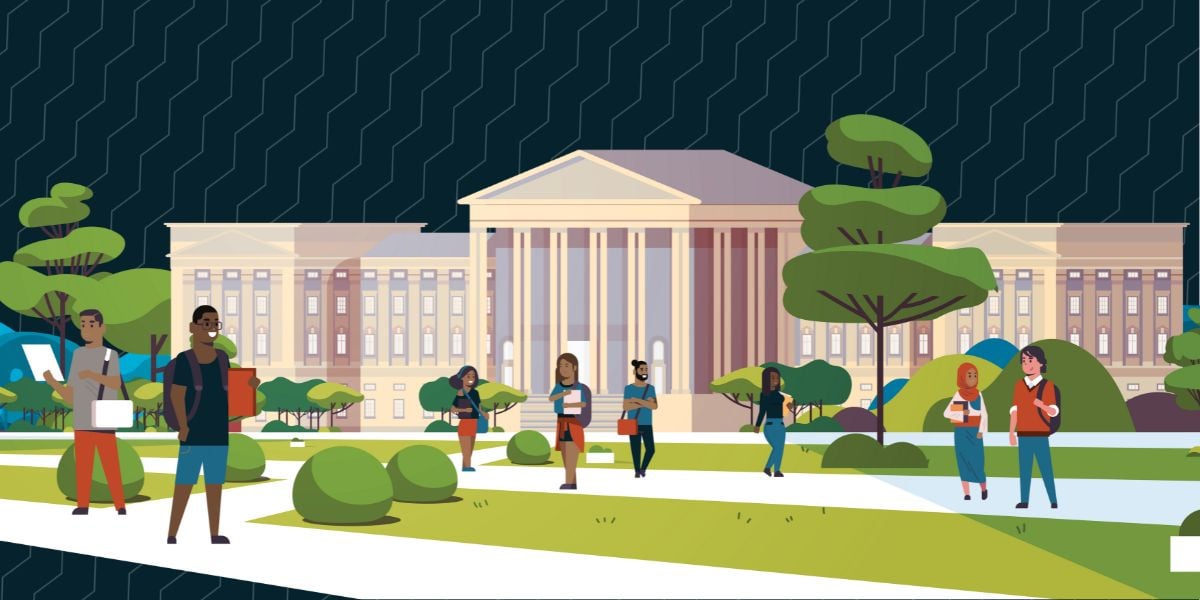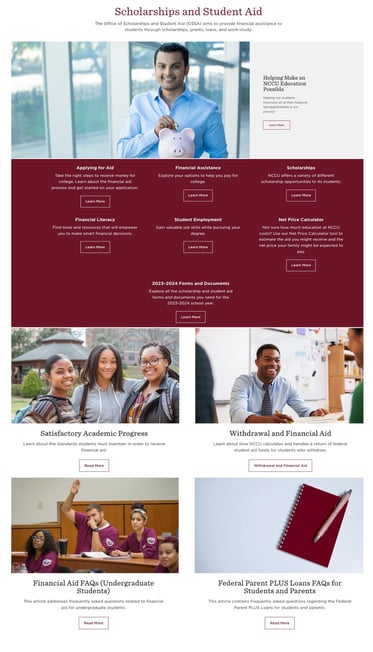Unlocking Potential: Addressing 3 Critical Student Needs for HBCUs to Flourish

As gatekeepers of opportunity at Historically Black Colleges and Universities (HBCUs), you wield the power to turn the aspirations of numerous prospective students into reality. Your pivotal role hinges on proactive engagement and addressing the pressing inquiries that weigh on the minds of those contemplating an HBCU education.
Whether it's reassuring about affordability, fostering a sense of community, or showcasing post-graduation prospects, the guidance offered by HBCUs reshapes the trajectory of student enrollment. Each of these facets plays an integral part in establishing the trust and openness crucial for transitioning admitted applicants into enthusiastic enrolled students.
Concern No.1: Is Education Affordable for My Family?
Prospective students and their families are eager for clarity regarding the financial obligations associated with higher education. They seek detailed information on tuition costs, available scholarships, and financing opportunities to make informed decisions. It's imperative for your HBCU to demonstrate how it facilitates access to quality education without imposing insurmountable financial burdens.
In addition to ensuring that admissions personnel are well-versed in the array of financial aid avenues, your institution's website and communication channels must serve as transparent sources of information. By highlighting your HBCU's competitive pricing relative to other institutions, you emphasize its commitment to affordability and inclusivity, thereby broadening accessibility to a diverse student body.
Establishing trust is paramount in fostering long-term relationships with students embarking on a four-year collegiate journey. This trust is cultivated through transparent communication practices that underscore your institution's commitment to accessibility and financial transparency.
Enhance your credibility by taking a proactive approach to sharing affordability information in your communications, including:
- Cost ranges for attendance that include not only tuition, but books, supplies, room and board, and other estimated personal expenses. If these costs vary by program, have that information easily accessible from the cost of tuition page on your website.
- Provide a three-to-five-year history of cost increases so that students and parents can plan for potential cost increases.
- Availability of scholarships and other types of aid that are not based on financial need.
- Financial aid deadlines and access to forms that are required to apply for financial aid.
- Provide various financing options that are available through your institution or otherwise.
- Dates that students and parents can expect to receive bills and dates when the bills are due.
- Information regarding student employment including the Federal Work-Study Program.
Top-ranked HBCU North Carolina Central’s Scholarship and Student Aid website page is a great example of an HBCU following best practices for communicating affordability options. The prospective student and their parent can easily access the information necessary to make decisions. NCCU positions itself as a valuable resource by providing transparency into the admissions process and financial aid options.

Concern No.2: Will I Be Embraced and Feel Like I Belong?
“Do I go somewhere where it is sink or swim, or do I go somewhere where everybody’s swimming with me?
– SeKai Parker, a prospective HBCU student
In recent decades, HBCUs have faced challenges as Black students gravitated towards predominantly white institutions enticed by financial incentives and superior resources. However, the landscape began to shift following the protests and demonstrations at the University of Missouri in 2015, as Black students increasingly demanded better treatment and conditions at these institutions, with many opting out altogether.
Now is the time for HBCUs to rewrite the narrative and showcase their unique value proposition.
HBCUs understand the needs of their students and offer tailored support and solutions. However, it's not just about having the solution; it's about effectively communicating it in a way that resonates deeply with prospective students.
How can HBCUs evoke the emotions and sense of belonging inherent in their communities?
Tap into the Power of Student Narratives
Student testimonials are potent tools for authenticity in marketing. While academic opportunities are crucial, don't underestimate the impact of testimonials that convey the genuine campus experience. The emotional connection prospective students seek can be vividly captured through testimonials brimming with pride and allegiance to the university.
Utilize the Talents of Your Student Body
Your current students are your greatest advocates. Provide platforms for them to share their unfiltered experiences and even encourage friendly competition to spotlight the richness of campus life. Harness various digital platforms, including social media, websites, and YouTube, to amplify these narratives far and wide.
Concern No.3: Is Investing in My College Education Worthwhile?
Prospective students seek assurance that their investment in education will yield lasting rewards, especially in an era rife with tales of college graduates burdened by debt and struggling to find success. It's understandable that they approach their decision with caution.
To instill confidence in the value of an education at your institution, showcase the accomplishments of HBCU graduates who have excelled across diverse fields such as medicine, law, business, and the arts. These success stories serve as compelling examples, inspiring potential students to envision themselves achieving similar heights and pursuing their aspirations.
Unveiling the Human Side of Statistics
While statistics provide valuable insights, it's the narratives behind them that truly resonate. Gallup research reveals stark differences in the experiences of Black graduates from HBCUs compared to their non-HBCU peers, translating into significantly different post-college lives characterized by purpose, social connections, financial stability, community engagement, and physical well-being.
As an admissions professional, your role extends beyond presenting numbers; it involves imbuing them with emotion to demonstrate to prospective students how these outcomes become achievable realities.
Pioneering Financial Transformation
HBCUs are at the forefront of driving financial transformation. With 40% of HBCU students being first-generation, and 70% eligible for Pell Grants, indicative of their low-income backgrounds, according to the 2021 UNCF Social Mobility Report and Bankrate, respectively, it's evident that these institutions play a pivotal role in uplifting students from disadvantaged backgrounds.
These statistics underscore the importance of transparently communicating how your HBCU propels graduates along the socioeconomic spectrum. HBCUs excel in facilitating upward mobility, surpassing all other institution types with mobility rates that exceed double the national average, according to comprehensive data.
Bringing It Home
While numbers and facts hold weight, the human mind retains stories and emotions far more effectively. The authentic and genuine touch that comes from telling the story will not only convey the data but also ignite the feelings that inspire students as they embark on the next stage of their journey.
Your dedication to providing clear, compelling answers will not only empower prospective students to make informed decisions but also contribute to the continued success and growth of your HBCU.

